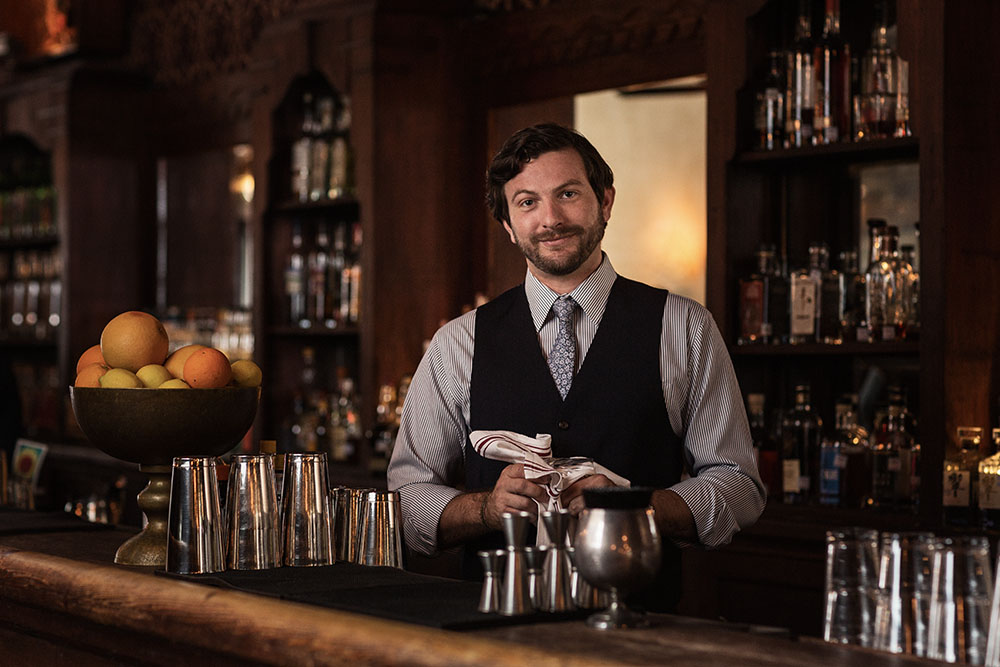“Sherry is having a little bit of a renaissance among super wine and cocktail geeks, although it’s still very niche,” says Christine Sismondo, a drinks writer and author of America Walks into a Bar. But, “those who love it, live by it.” Houston Eaves, beverage director at the James Beard-nominated Esquire Tavern in San Antonio, echoes this sentiment. “There’s lots of cool cocktail bars that have sherry on their menu, but it will continue to be niche,” says Eaves. “Thoughtful people who like eating and drinking are realizing how special, versatile and affordable sherry is.”
Sherry is one of the first wines to have a Designation of Origin dating back to 1483. It can only be made in the southwestern corner of Spain known as the sherry triangle. This region is situated on the Atlantic Ocean just a short, narrow passage away from Morocco, and is home to a busy shipping port that helped send these wines around the world.
Sherry is made from three different grape varietals — Palomino, Muscat and Pedro Ximénez — grown in chalky, limestone-rich soil. Most styles are crafted with just one varietal and then blended with older casks to achieve consistency in flavour.
Back in the sherry seminar, John Garrett, a Texas-based importer with the Victory Wine Group, led us through a tasting of the fortified wine, from bright, acidic finos, made from Palomino grapes and aged under a blanket of flor, to nutty, complex amontillados, also made with Palomino but then oxidized in the barrel, to a rich, raisin-y Pedro Ximénez made with PX grapes that have been dried under the sun. The complexity of flavours, from savoury and bitter to floral and earthy, had me at first sip. And it’s the diversity in flavours that really appeals to bartenders looking to add depth to their cocktails.

According to Garrett, it’s the cocktail community that’s really behind sherry. It all started around 2009 when bartenders began experimenting with sherry-laced pre-Prohibition cocktail recipes.
The simple Sherry Cobbler, a mix of sherry, sugar and citrus poured over crushed ice, is one of those vintage cocktails that really caught on. The Esquire Tavern serves a tiki-inspired Cobbler with a house-made piña colada-inspired painkiller marmalade and a blend of five different sherries. “The tropical accent really intensifies the notes of the sherry,” says Eaves.
Moderating alcohol levels in his concoctions is important to Eaves. So, during the summer he’ll whip up a Monty Collins, a refreshing tipple with bright citrus notes, but will skip the spirits to lower the proof. At the Esquire, Eaves serves it with a choice of vodka, bourbon, whiskey or rum, which, he adds, “gives the cocktail a spirit backbone while still allowing sherry to be a strong player.”
Sherry ranges between 15 to 22 percent alcohol, which fits in well with a wider move towards “session drinking,” choosing to drink multiple lower-alcohol drinks over a period of time. “The low-alcohol trend is really good for sherry,” says Sismondo. “Cocktails like the Bamboo and Adonis are clean, neat and martini-ish but the overall alcohol content of the drink is 16 percent versus 30 or 32 percent when made with a spirit.” Nick Kennedy, owner and senior executive barback at Toronto’s Civil Liberties agrees: “For somebody who’s had one too many whiskey sours, I’ll sell them on this crazy sherry fino sour without telling them that the ABV is less than a third.” This way, he says, “they can really enjoy the night without noticing that they’ve had the brakes put on.”
If you still want the taste of a spirit in your cocktail, Kennedy notes that sherry works well as a split base. For example, he explains that, “if a recipe calls for two ounces of gin, you can substitute one ounce of gin for fino sherry and still have agreeable results.”
To start experimenting with sherry cocktails, follow these basic rules that Kennedy uses to train new bartenders and shares with students in the cocktail classes held at his bar.
For clear spirits and citrus cocktails, go with drier sherries like fino and manzanilla, or sometimes amontillado. “The world’s driest wine is fino sherry,” explains Kennedy, “it brings brightness and minerality, as well as tartaric acid, which can really help punch up cocktails.” Kennedy’s London Calling is a great example of this.
On the darker sherry spectrum, amontillado, oloroso and Pedro Ximénez work well with aged spirits or stirred-down cocktails. “If you’re looking to add a nuttiness or richness to a winter sour, or a stirred cocktail, you get into the amontillados and olorossos,” says Kennedy. “Or, for a sweet candy fig and intense, rich raisin character, Pedro Ximénez really brings depth or balance to a cocktail.”
Sherry’s place at the bar seems to have a bright future thanks to the advocates in the cocktail scene. But, it’s still exquisite straight up. As Sismondo concludes, “to me, the perfect drink before dinner is a glass of chilled fino.”

London Calling
By Nick Kennedy at Civil Liberties
1 3/4 oz Beefeater
1 oz lemon juice
3/4 oz sugar syrup (1:1)
3/4 Tio Pepe Fino Sherry
4 dashes Orange bitter
Combine all the ingredients in a shaker with some ice. Shake till well chilled. Strain through fine mesh and garnish with the zest of grapefruit.
En Rama Old Fashioned
Created by Houston Eaves at The Esquire
2 oz Fino en Rama Sherry
1/4 oz Tempus Fugit Creme de Banana
1 dash Bittermens Elemakule Tiki Bitters
Lemon peel
Build in glass on large format ice. Stir until well chilled. Express lemon oil over top and discard.
